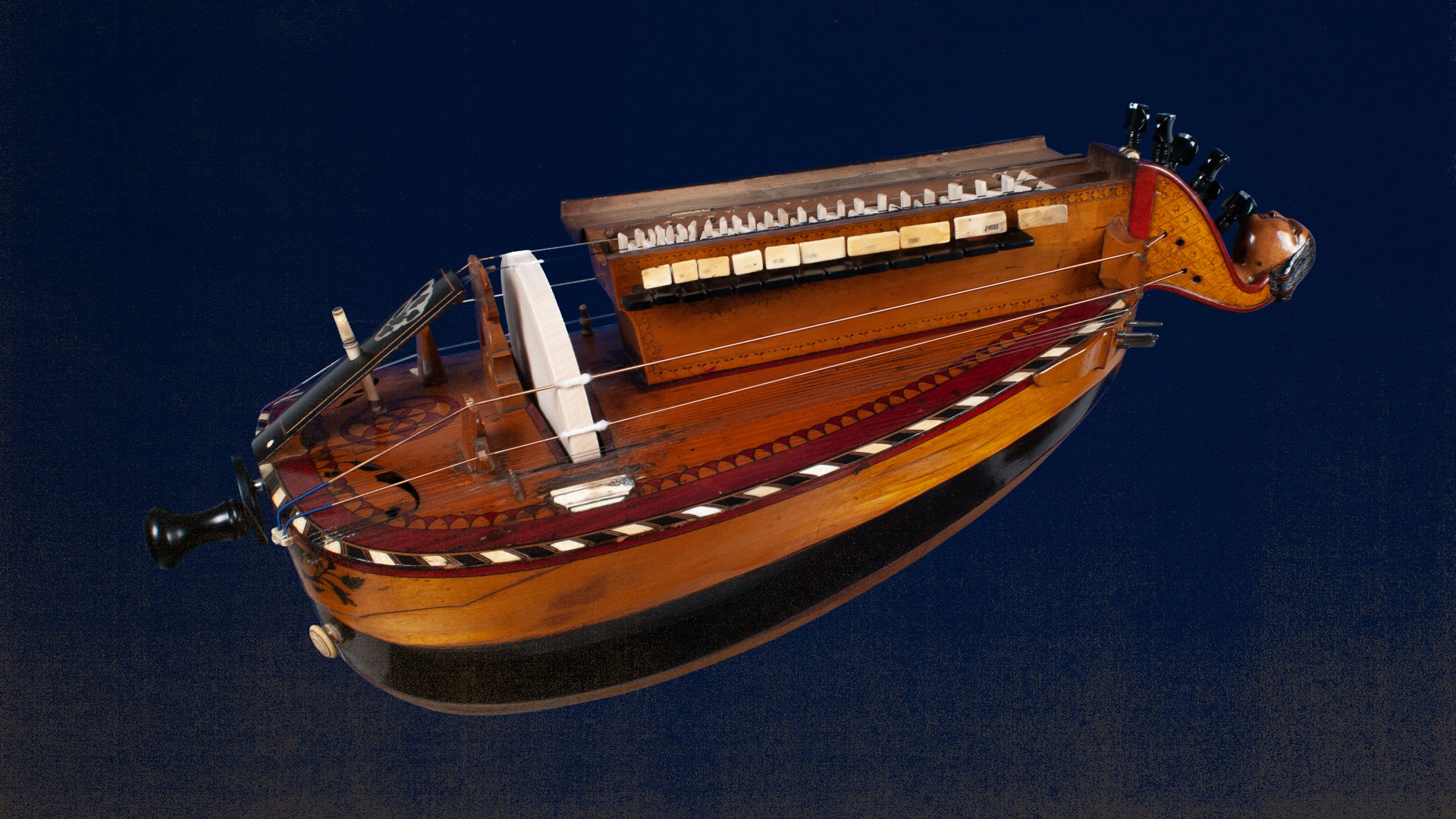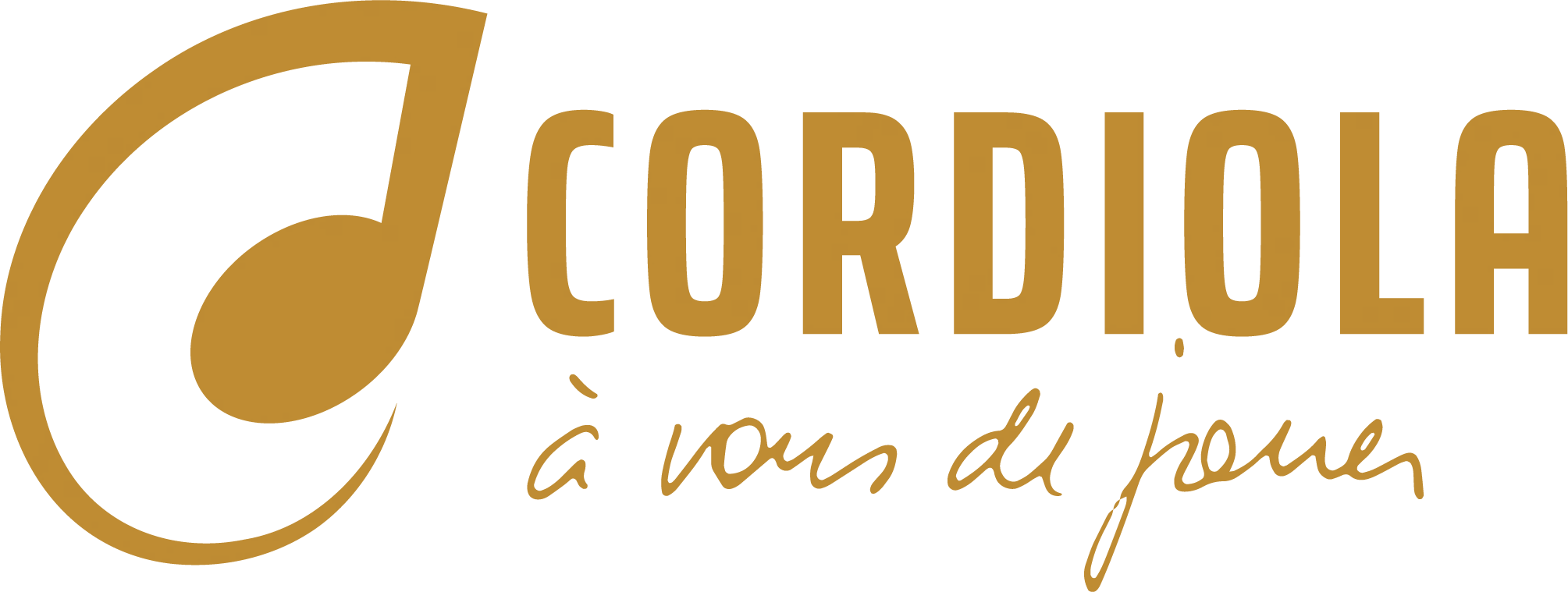The “organistrum”, which is played by two musicians, appeared around the 12th century in Western Europe. Used to accompany religious singing, the instrument evolves in its form and functions over time. Polylobed hurdy-gurdy or pencil case, “chifony”, court or peasant instrument, the hurdy-gurdy never ceases to renew itself, in its appearance and its practices. Long confined to folk groups and the folk scene of the 70s, the Hurdy-Gurdy or Vielle à roue now occupies all musical fields.
The Hurdy-Gurdy: its fascinating history and the magic of its strings
The Hurdy-Gurdy is a unique instrument, using a wheel which acts as a continuous bow to combine melody (the chanterelles) with rhythm (a percussion effect called the trompette) all accompanied by a continuous drone sound (rather like bagpipes) and sympathetic strings (which vibrate freely to give a natural echo). From Baroque instruments to electric hurdy-gurdies, via the traditional standards that developed in the 19th century, discover the fascinating instrument that is the hurdy-gurdy.
Organology of the hurdy-gurdy
The hurdy-gurdy is now played in India, Australia and the Faroe Islands. From the baroque orchestra to rock groups, musicians continue to innovate with an instrument that evolves in its shapes, sounds and functions.
Here are some common terms worth highlighting:

Sound box
We are talking about a flat hurdy-gurdy (which would come from guitar bodies) and a round hurdy-gurdy, similar to the morphology of the lute.
Peg box
This part receives the pegs, which allow the tension of the strings. Traditionally located at the opposite end of the crank, this part can be plain or sculpted with a carved head.
Keyboard
This elongated, rectangular box receives the melody strings and the keys which slide to affect the vibrating length of the strings. The keys are equipped with tangents, small pieces of wood which press on the strings when the key is pressed.
Wheel (and wheel cover)
The wheel rubs the strings and sets them into vibration. This “perpetual bow”, whose surface is very sensitive, is protected by the wheel cover (arched piece of wood). The edge of the wheel is coated with rosin, as with all bowed instruments.
Crank
The crank is located at the end of an axle, on which the wheel is fixed. The metal “s” receives the handle. Wood, bone, porcelain, plastic… Try the materials of the different handles to find the system that suits you!
Soundboard
The top completes the resonance box, like the stretched skin of the drum. The vibrations of the strings are transmitted to the table by bridges. The wood this table is made of can radically change the sound of a hurdy-gurdy!
Tailpiece
This inclined piece of wood, directly above the crank, serves as an anchor point for the chanterelles and the trompette (chien) tuning peg.
Bridges and nuts
The chanterelle bridge is completed by the 2 bridges which hold the drones and the ears (8) and nuts x2 (8) which direct the strings into the pegbox. These bridges transmit the vibration of the strings into the soundboard.
The Chien
also know as the dog or trompette (trumpet) this loose bridge vibrates under the trompette string to create an accompanying rhythmic “buzz” sound (or “bark”) when the player accelerates the handle enough.
The strings
The sound of the instrument is obtained by the vibration of a string. This vibration is implemented by the wheel. The strings, made of gut or metal, serve different functions.
The strings are wound with cotton (except for the sympathetic strings). This makes it possible to lighten and modulate the sound produced by the vibration of the string.

The Chanterelles
The melody is played by the “chanterelles,” gut strings that run through the keyboard. The vibrating length of the strings is shortened by the keys. There are 23 black diatonic keys and white semitone keys (2 octaves) for a soprano Hurdy Gurdy
Trompette
A string, called a “trompette”, rests on a movable bridge, the “dog” or “chien”. The vibration of the chien is regulated by a peg, placed on the tailpiece. The impulses given by the crank accentuate this vibration. This is the rhythmic part of the hurdy-gurdy.
Mouche
This string is called a mouche or “fly”. (fly is not used) This light but useful drone string is tuned in unison or third in relation to the chanterelles.
Small drone and big drone
The hurdy-gurdy can produce “drone” music. The drone strings accompany the melody. They are traditionally tuned to the octave or third or fifth in relation to chanterelles. The small and large drones (opposite the musician) are often made of round-wound metal on gut.
Sympathetic strings
Sometimes, sympathetic strings (which sound in resonance) are added to the soundboard of the hurdy-gurdy.
Examples of tunings
Rating equivalence between the French and American systems
The lower the number next to the note, the lower the note (e.g. G3 is G an octave below G4).
HURDY-GURDY TUNED IN G/C
“Auvergnat” tuning
GUT ROPE / SYNTHETIC ROPE
| 1st chanterelle G4 | BRH 89 / BRH 94 / BRH 97 KF 74 / KF 77 / KF 81 |
| 2nd chanterelle G3 | Fork less than or equal to 345mm: violin G Fork over 350mm: G viola |
| Mouche G4 | BRH 109 KF 91 |
| Trompette C4 | BRH 89 / BRH 94 / BRH 97 KF 74 / KF 77 / KF 81 |
| Trompette G4 | BRH 68 / BRH 74 KF 64 |
| Trompette G3 | BRH 99 / BRH 104 / BRH 109 KF 84 / KF 86 / KF 91 |
| Petit bourdon C3 | BFA 442 / BFA 532 KFA 484 / KFA 500 / KFA 530 |
| Petit bourdon G2 | BFA 854 KFA 854 |
| Gros bourdon C2 | BFA 1282 KFA 1850 |
HURDY-GURDY TUNED IN RE/SOL (D/G)
“Bourbonnais” tuning
GUT ROPE / SYNTHETIC ROPE
| 1st chanterelle D5 | BRH63 / BRH 68 / BRH 71 / BRH 74 KF 64 |
| 2nd chanterelle D4 | BRH 97 / BRH 99 / BRH 104 KF 81 / KF 84 / KF 86 D violin (pitch less than or equal to 345mm) D viola (pitch above 350mm) |
| Mouche G4 | BRH 109 KF 91 |
| Trompette D4 | BRH 81 / BRH 89 / BRH 94 KF 69 / KF 74 / KF 77 |
| Trompette G3 | BRH 99 / BRH 104 / BRH 109 KF 84 / KF 86 / KF 91 |
| Petit bourdon D3 | BFA 442 / BFA 484 KFA 440 / KFA 484 / KFA 500 |
| Petit bourdon D2 | BFA 1282 KFA 1474 / KFA 1850 |
| Gros bourdon G2 | BFA 854 KFA 854 |

